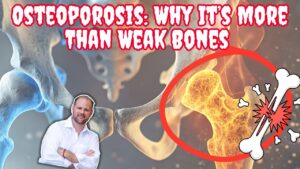Stop Neuropathy In Its Tracks: The Role of Homocysteine in Nerve Damage
If you’re dealing with neuropathy, you know how debilitating it can be. The constant numbness, tingling, and pain can take a toll on your daily life. But what if I told you that there’s one critical marker that you need to check to stop neuropathy in its tracks? That marker is homocysteine, and I’m going to show you why it’s so important.
The Importance of Nerve Health
Your nerves are like the lifeline of your body. They help you feel sensations, control movements, and perform essential functions. But when your nerves are damaged, it can lead to a whole host of problems. And that’s where homocysteine comes in.
Homocysteine is an amino acid that’s produced by your body when you digest protein. While it’s a necessary component of your body’s processes, high levels of homocysteine can wreak havoc on your nerves. And when your nerves are damaged, it can affect your quality of life in significant ways.
Nerve Damage from High Homocysteine
Here’s what can happen when your homocysteine level is above six:
Your nerves can die:
Homocysteine is a direct neurotoxin, which means that it can cause nerve cells to die. And when your nerves start dying off, it can lead to significant problems.
When your homocysteine level is high, it can cause endothelium dysfunction, which means that your arteries can’t deliver the proper oxygen and nutrients to your nerves. This can lead to further damage to your nerves, exacerbating your neuropathy symptoms.
Your cells can't detoxify:
High homocysteine can cause cell damage, which can lead to poor cell detoxification. And when your cells can’t detoxify properly, it can further exacerbate your neuropathy symptoms.
High homocysteine can cause defects in methylation, which can affect the myelin sheaths that cover your nerve cells. When your myelin sheaths are damaged, it can lead to poor nerve function and increased neuropathy pain.
You can experience inflammation:
Homocysteine can cause inflammation in your body, which can further damage your nerves and exacerbate your neuropathy symptoms.
As you can see, high homocysteine levels can have a significant impact on your nerves. So, it’s crucial to get your homocysteine levels checked regularly and take steps to keep them within the healthy range. The lab range is 0 to 14.5, and the sweet spot is 5 to 6. If your homocysteine level is above six, it’s time to take action.
Conclusion
In conclusion, neuropathy can be a debilitating condition, but you don’t have to suffer in silence. By understanding the role of homocysteine in nerve damage and taking steps to keep
#neuropathyawareness #neuropathytreatment #nervepainrelief #homocysteine #healthylifestyle #healthyhabits #wellnessjourney #healthtips #selfcare #healthandwellness #healthyliving #healthandfitness #healthandwellnesscoach #healthandwellnessjourney #healthandwellnessblogger #healthandwellnesscommunity #healthandwellnessmatters #healthandwellnessblog #healthandwellnesstips #healthandwellnessproducts #healthandwellnessbusiness #healthandwellnessforall #healthandwellnesscoachlife #healthandwellnesscenter #healthandwellnesscoaching #healthandwellnessprogram
Frequently Asked Questions (FAQ)
Homocysteine is an amino acid your body produces when digesting protein. When levels are too high, it becomes a direct neurotoxin that can damage nerves, increase inflammation, and worsen neuropathy symptoms.
High homocysteine can kill nerve cells, damage arteries, impair cell detoxification, harm the myelin sheath, and trigger inflammation—all of which contribute to nerve damage and neuropathy progression.
The standard lab range for homocysteine is 0 to 14.5, but the ideal range for protecting nerve health is between 5 and 6. Levels above 6 may put you at risk for neuropathy-related damage.
By regularly checking homocysteine levels, you can catch imbalances early and take proactive steps—through diet, lifestyle changes, or medical guidance—to keep levels in a healthy range and protect nerve function.








